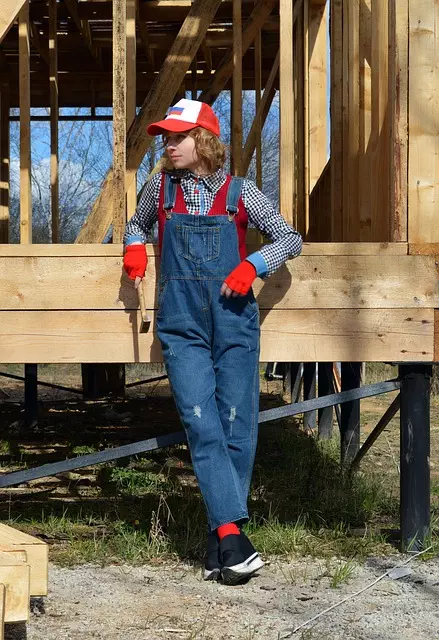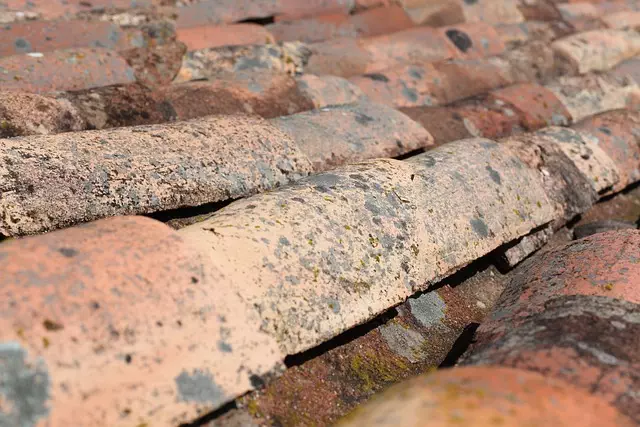Residential foundation repair is essential for maintaining home structural integrity and preventing costly damages. Common issues like cracks, uneven floors, and moisture intrusion require early detection through regular inspection. Advanced technologies like Ground-Penetrating Radar (GPR) and fiber optic sensors offer non-invasive testing methods. Prompt action on minor problems prevents complex repairs later. Regular maintenance and understanding common symptoms are key to effective residential foundation repair strategies, ensuring homes remain structurally sound and aesthetically pleasing.
Residential foundation repair is a critical aspect of home maintenance, addressing structural integrity issues that can compromise safety and property value. This comprehensive guide delves into the essentials of understanding and identifying common foundation problems in homes, from visual inspections to advanced technology assessments. By exploring non-invasive testing methods, timely intervention strategies, and successful case studies, homeowners can navigate the complexities of residential foundation repair with confidence.
Understanding Residential Foundation Repair: The Basics

Residential foundation repair is a crucial aspect of maintaining the structural integrity and longevity of homes. It involves addressing various issues that can compromise the stability and safety of a structure. These problems often arise due to factors like poor initial construction, settlement, soil conditions, moisture intrusion, or age-related deterioration. Identifying and rectifying them early on is essential to prevent more significant and costly damages.
The basics of residential foundation repair encompass several key steps. First, an inspection is conducted to identify the specific issues, such as cracks in the foundation walls, uneven floors, or doors that stick. Once these problems are pinpointed, professionals employ various techniques tailored to the cause. This may include underpinning, where support is added beneath the foundation to stabilize it, or repairing and replacing sections of the foundation with new materials. The goal is to restore the foundation’s structural soundness, ensuring the safety and comfort of those who inhabit the home for years to come.
Common Foundation Problems in Homes

In many residential areas, homes face a range of common foundation problems that can impact structural integrity and comfort levels. One of the most visible issues is cracks in the foundation walls, which can be caused by poor soil conditions, excessive moisture, or movement due to changes in temperature. These cracks, though initially small, have the potential to expand over time, leading to more severe structural damage if left unaddressed. Another prevalent problem is uneven floors, where gaps or bumps may develop due to settlement or shifting of the underlying soil. This not only affects the aesthetic appeal of a home but can also lead to trip hazards and discomfort for residents.
Water intrusion is yet another critical foundation issue that often goes unnoticed until significant damage occurs. Leaks from plumbing, poor drainage systems, or cracks in the foundation walls can allow water to seep into the basement or crawl space, causing mold growth, wood rot, and corrosion of electrical components. Regular inspection and maintenance are crucial for identifying these problems early on, enabling homeowners to seek prompt residential foundation repair solutions before they escalate.
Visual Inspection: Identifying Signs of Damage

Visual inspection is a crucial step in identifying potential foundation problems, especially for those addressing residential foundation repair issues. It involves carefully examining the exterior and interior of a home to detect any visible signs of damage or structural instability. During this process, professionals look for cracks in walls, floors, or ceilings—both vertical and horizontal—as these could indicate shifting or settling of the foundation. Additionally, uneven floors, doors that stick or swing, and windows that are misaligned are all visual cues suggesting underlying foundation issues.
Skilled technicians use their expertise to interpret these signs, pinpointing specific problem areas. This initial assessment helps determine the scope of the issue, whether it’s a simple crack or a more complex structural problem. Early detection through visual inspection is vital for effective residential foundation repair, as it allows for timely intervention and minimizes potential long-term damage.
Non-Invasive Testing Methods for Foundation Health

Non-invasive testing methods have revolutionized the way we assess foundation health, especially in the context of residential foundation repair. These techniques offer a safe and effective alternative to traditional invasive methods, minimizing disruption to both the structure and the surrounding environment. One such method is ground-penetrating radar (GPR), which uses electromagnetic waves to create detailed images of underground structures. This allows for the early detection of cracks, shifts, or anomalies in the foundation without any physical alteration to the building.
Another popular non-invasive testing approach is the use of fiber optic sensors and strain gauges. These advanced technologies can monitor minute changes in stress and deformation within the foundation walls over time. By installing these sensors discretely around the perimeter, homeowners and professionals can gain real-time data on the structural integrity of the foundation, enabling prompt action if any issues are identified. This proactive approach to residential foundation repair ensures longevity and stability for even the oldest homes.
Advanced Technology in Foundation Repair Assessment

In today’s digital era, advanced technology plays a pivotal role in revolutionizing the landscape of residential foundation repair. Professional contractors now utilize sophisticated tools and techniques to accurately assess and diagnose even the most subtle foundation problems. One such game-changer is ground-penetrating radar (GPR), which enables non-invasive imaging of underground structures, allowing for detailed analysis of foundation cracks, settlement issues, and other defects without causing any disturbance to the surface or surrounding areas.
Additionally, drones equipped with high-resolution cameras are being deployed to capture aerial footage of homes, providing a comprehensive view of potential foundation problems that might be missed from ground level. These technologies, coupled with advanced data analysis software, empower contractors to offer more precise and effective solutions for residential foundation repair, ensuring the longevity and stability of structures across various landscapes.
When to Call a Professional for Foundation Repairs

If you’ve noticed signs of foundation problems in your home, such as cracks in walls or floors, doors that stick, or uneven flooring, it’s crucial to act promptly. While some minor issues might be addressed through DIY methods or basic repairs, more severe cases often require the expertise of a professional. Residential foundation repair specialists are equipped to handle complex situations where structural integrity is at stake. Time is of essence; the longer you wait, the costlier and more challenging the repairs may become.
Calling a professional for residential foundation repair is recommended when the damage exceeds cosmetic concerns, indicates significant structural instability, or if your home’s safety and value are compromised. These experts can perform thorough inspections, diagnose the root causes, and offer tailored solutions that ensure long-lasting stability and protection for your property.
Effective Strategies for Preventing Future Foundation Issues

Preventative measures are key in avoiding future foundation issues, especially for residential properties. Regular inspection is a powerful tool; homeowners or property managers should schedule periodic assessments to identify any signs of damage early on. This includes checking for cracks in foundations, walls, and floors, as well as observing any uneven flooring or doors that don’t close properly. Addressing these issues promptly can prevent them from escalating into costly residential foundation repair problems.
Implementing proper drainage around the property is another strategy to mitigate risks. Ensuring that rainwater flows away from the building’s foundation can help prevent erosion and moisture intrusion, which are leading causes of foundation damage. Additionally, maintaining a safe distance between buildings and trees, and avoiding excessive overhead watering, can reduce the risk of root intrusions that might compromise the foundation over time.
Case Studies: Successful Residential Foundation Repair Projects

In the realm of residential foundation repair, case studies offer valuable insights into successful projects that have addressed foundational issues in homes across various locations and climates. These real-world examples highlight the importance of meticulous planning, utilizing advanced technologies, and employing specialized techniques for effective repairs. For instance, a recent case study in a suburban area revealed a home with significant settling issues due to weak soil conditions. Through comprehensive analysis, experts identified the problem at its root, implemented deep foundation solutions, and successfully stabilized the structure, ensuring longevity and comfort for the homeowners.
Another compelling example showcases a historic residence experiencing differential settlement, leading to cracks in the walls and uneven floors. The repair team utilized innovative methods, including piering and heaving, to lift and level the foundation while preserving the building’s historical integrity. The successful outcome not only resolved structural problems but also maintained the architectural charm of the property. These case studies exemplify how professional and tailored approaches to residential foundation repair can address complex issues, ensuring homes remain sturdy and safe for years to come.
Common Myths About Foundation Problems Debunked

Many homeowners often believe that foundation problems are rare or only occur in certain types of climates, but this is a common myth that needs to be debunked. Foundation issues can affect homes across all regions and weather patterns, making it crucial for every homeowner to stay informed. Residential foundation repair isn’t always an immediate necessity; early detection through regular inspections can prevent significant damage. Many signs of foundation problems, such as cracks in walls or uneven floors, are easily noticeable but often dismissed as normal wear and tear.
Another misconception is that only major structural damage requires professional intervention. Minor issues like slight vertical cracks or minor misalignments can be early indicators of more severe foundation problems. Prompt action, even for seemingly small issues, is essential to prevent costly repairs later. Regular maintenance and understanding common foundation problem symptoms can help homeowners catch potential issues early on, ensuring a solid and safe living environment through effective residential foundation repair strategies.
